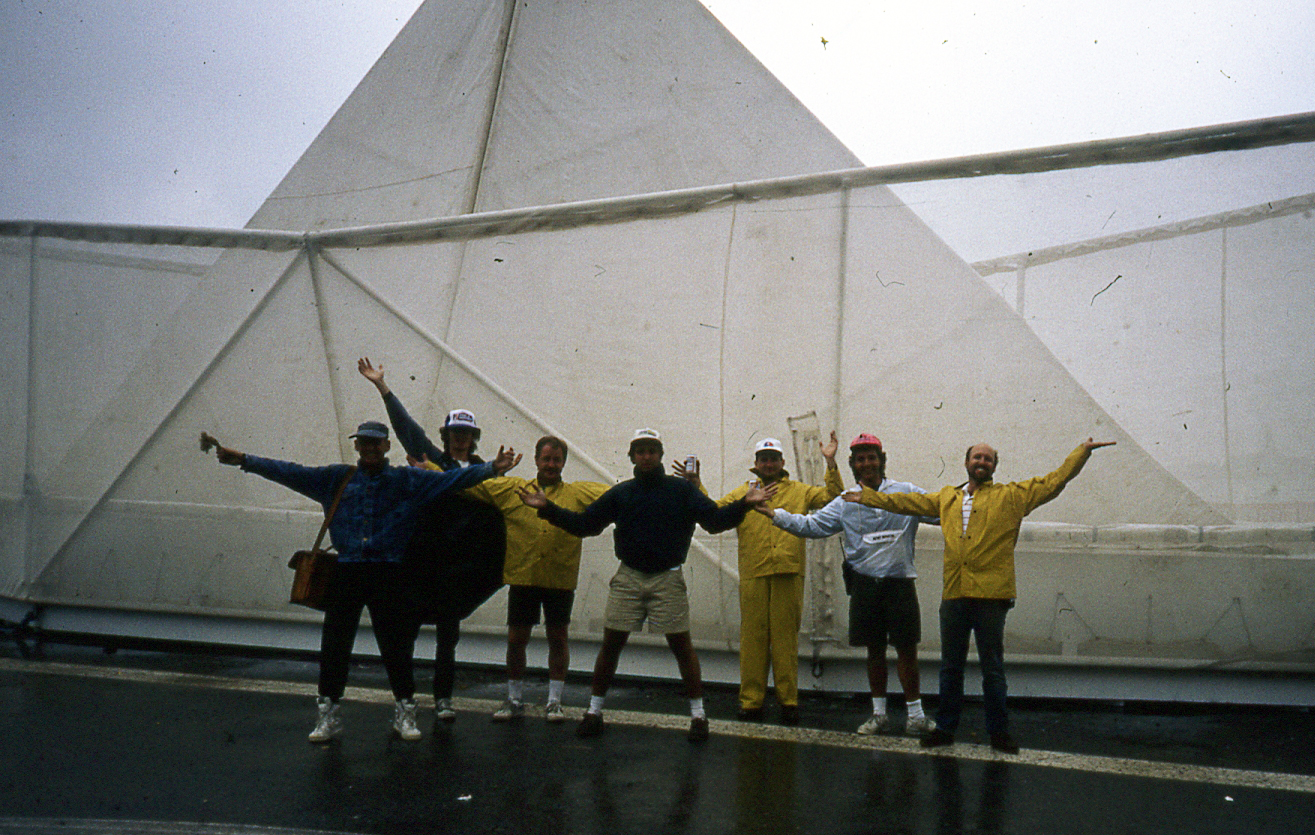SELECTED WORKS
A Day Down a Goldmine
Begining as an exhibition at Glasgow’s Third Eye Centre in 1982, A Day Down a Goldmine, sought to address the futility of human ambition for power through acquiring gold, the absurdity of the monetary system, and the injustices of the banking system.
The exhibition developed into a theatrical event. Wyllie and actor Russell Hunter collaborated on a performance to amplify the message, incorporating exhibits such as the Machine for the Equal Distribution of Wealth, which included a spanner in its works. A new adaptation of the play was a hit at the 1985 Edinburgh Festival, as well as sold-out performances at the ICA in London and the Tramway in Glasgow in 1990, with Bill Paterson and Wyllie in starring roles.
The Straw Locomotive
Commissioned in 1987 by TSWA-3D, The Straw Locomotive was the first of Wyllie’s ambitious street theatres. Constructed using wire mesh and straw, Wyllie’s life-sized sculpture served as a striking statement on the demise of Glasgow’s once-thriving heavy industry.
Over the years, Glasgow sent an astonishing 18,000 locomotives to 43 different countries, including some of the largest and most powerful steam engines built at Springburn. In the 1950s, it was common for engines to be transported through the city to Stobcross Quay for international shipping.
Wylie’s sculpture was suspended by the same crane that was responsible for loading the North British Locomotives onto ships bound for international destinations.
The Straw Locomotive waited for six weeks, suspended, in anticipation of a ship that never came. The sculpture had a strong effect on those who witnessed it, especially those who held memories of the original locomotives.
The Straw Locomotive was lowered then transported on a low-loader through the streets of Glasgow to the former site of the North British Locomotive Works. The Viking-inspired ceremony saw The Straw Locomotive set ablaze, accompanied by the haunting sound of bagpipes. The charred remains revealed a Question Mark.
The Paper Boat
Built in 1989, The Paper Boat measured 78 feet in length and opened to reveal a question mark.
Glasgow’s Finnieston crane served as the launching point for The Paper Boat. The vessel was named Q.M., but Wyllie admitted, “we were never sure what Q.M. stood for. It’s always good not to know something about what you’re doing. We had notions it might mean Queen Mary or Question Mark or Questioning Mind.”
The multi-faceted project, sponsored by Gulbenkian, showcased a blend of engineering, street theatre, and exhibitions. The perceived fragility of The Paper Boat was widely acknowledged as a symbol of the decline of the shipbuilding industry in western Scotland.
The Paper Boat navigated through Glasgow, London, Antwerp, Dumfries, and the Scottish East coast. When it arrived at the World Financial Center, New York in 1990, the Wall Street Journal featured it on its front page. After seven years of service, The Paper Boat embarked on its final journey, sailing under the Forth Bridge to reach the Inverkeithing ship breakers.
Spires
Positioned on various parts of the earth’s surface to “celebrate the place on which it stands”, Wyllie’s sublime Spires had nothing but a serious purpose “aiming for transcendence, to work on a spiritual level like Beuys, for that seems to be the missing element in life today.”
The Stones of Scotland
A sculpture to celebrate the creative spirit in Scotland at the start of a new millennium. The 32 regions of Scotland are represented, involving local communities in finding a stone to represent their area. The chosen site is in Regent Road Park, Edinburgh overlooking the Scottish Parliament.
A collaboration between George Wyllie MBE., Kenny Munro, Lesley-May Miller with Stuart Rogers of the Paul Hogarth Company. The official launch ceremony was on 30th November 2002.

The Berlin Burd
In 1988, George was one of the artists commissioned by the Glasgow District Council to showcase Scotland during Glasgow-Berlin 88, an exciting series of events that paved the way for Glasgow to be celebrated as the European City of Culture in 1990.




































